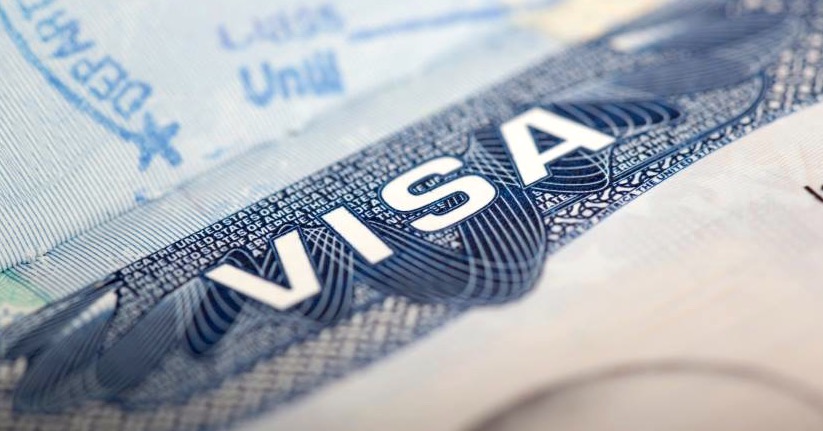USCIS chairman Cissna addressed the Senate committee on the modernization of EB-5 and provided updates of regulations
Introduction
Congress created the EB-5 visa program in 1990 to stimulate the U.S. economy through job creation and capital investment by foreign investors. The EB-5 program makes immigrant visas available to foreign nationals who invest or are actively in the process of investing at least $1,000,000 in a new commercial enterprise (NCE) and create or preserve at least ten permanent full-time jobs for qualified U.S. workers. Congress allowed for a reduced investment amount of $500,000 if the investment is in a Targeted Employment Area (TEA), defined to include certain rural areas and areas of high unemployment.
In 1992, Congress expanded the allowable measure of job creation for the EB-5 visa program by launching the Immigrant Investor Pilot Program (or Regional Center Program), setting aside EB-5 visas for investors in USCIS-designated regional centers. A regional center is an economic unit, public or private, in the United States that is involved with promoting economic growth.
As of June 4, 2018, there are 903 regional centers in the United States. This is up from about 588 at the end of fiscal year (FY) 2014, and a total of only 11 at the end of FY 2007. Applicants for regional center designation must present a general proposal for the promotion of economic growth, including increased export sales, improved regional productivity, job creation or increased domestic capital investment in a limited geographic area. Approved regional centers must file an annual certification to demonstrate continued eligibility for designation as a regional center.
All immigrant investors must file individual petitions supported by evidence that their investment capital was fully invested or is actively in the process of being invested, the capital has been placed at risk, and also that the invested capital was acquired through lawful sources. Each petition also must be supported by evidence that the investment has, or will, create or preserve at least ten permanent full-time jobs for qualified U.S. workers. If approved, the immigrant investor may be admitted to the United States as a conditional permanent resident.
Approximately two years after admission as a conditional permanent resident, the immigrant investor is required to petition USCIS for the removal of such conditional status, at which time the investor must show that he or she invested or was actively in the process of investing the requisite capital, that he or she sustained those actions over the two-year conditional permanent residence period, and that job creation requirements were met or will be met within a reasonable time. If approved, the conditions on the investor’s permanent residence are removed.
The popularity of the program coupled with concerns that the program rules would change has sparked a huge number of petitions being submitted to USCIS. The agency received 14,298 petitions in FY 2015, 14,147 in FY 2016 and 12,266 in FY 2017.
The Committee has been briefed in the past about various concerns related to fraud, abuse, and national security risks related to the program. Concerns have been raised about how the program is used by foreign governments to conduct economic espionage, to carry out terrorist activity, or by investors to launder money in the United States. In May 2017, USCIS conducted an internal fraud assessment and identified 19 cases of confirmed national security concerns. Specifically, the national security concerns identified related to terrorism, espionage, information and technology transfer, or a combination of these factors.
USCIS partners with other agencies, including the Federal Bureau of Investigation (FBI) and the U.S. Securities and Exchange Commission (SEC), and our DHS partners at U.S. Immigration and Customs Enforcement (ICE) / Homeland Security Investigations (HSI), to address program vulnerabilities. We are also aware of concerns that the program is only benefiting a few major metropolitan areas, and that EB-5 funding is not supporting the high unemployment and rural areas as Congress intended. The Government Accountability Office (GAO) issued reports on the EB-5 program in 2015 and 2016. The reports assessed fraud risks, as well as the validity and reliability of methodologies used to determine job creation and economic benefits. While highlighting the positive steps USCIS has taken to mitigate fraud and administer the EB-5 program, GAO made four recommendations in 2015 for USCIS to strengthen fraud prevention, detection, and mitigation capabilities within the program and to more accurately assess and report on program outcomes and the overall economic benefits of the program. DHS concurred with these recommendations, has implemented two and is working to implement the others.
The EB-5 regional center program is set to expire on September 30, 2018. In the last decade, the program has been re-authorized by Congress without added safeguards or tools for the Department to better operate the program. In the absence of legislative reforms, Congress should consider allowing the program to expire. In the meantime, however, USCIS continues to work on various regulatory, policy, and operational changes to enhance the integrity of the program on behalf of the American people and investors around the world.
RECENT OPERATIONAL ENHANCEMENTS TO THE PROGRAM:
USCIS continues to take steps to improve the administration and integrity of the EB-5 program. Some examples of these efforts include:
The Investor Program Office (IPO) Fraud Detection and National Security Directorate (FDNS) employees used the USCIS Administrative Site Visit Verification Program in 2016 to visit project sites for 50 new commercial enterprises and job-creating entities. In 2017, 232 site visits were conducted, and USCIS also hired additional officers who are primarily dedicated to conducting EB-5 site visits.
USCIS has expanded our security checks to cover both regional center businesses and individuals participating in the program, and we also entered into a memorandum of understanding with the Financial Crimes Enforcement Network (FinCEN) to further expand access to FinCEN’s holdings and services.
USCIS has partnered with other federal agencies including the Securities and Exchange Commission, the Federal Bureau of Investigation and Immigration and Customs Enforcement to strengthen the EB-5 program. USCIS has hosted case agents as well as attorneys from the Department of Justice to collaborate in furtherance of the departments’ and agencies’ individual missions.
In FY 2016, USCIS began remotely interviewing foreign investors seeking to remove their conditional status as part of a pilot program. As of June 1, 2018, we had conducted more than 44 of these remote interviews. These interviews are conducted over video conference in secured USCIS facilities and used to verify information submitted by petitioners.
In FY 2017, USCIS published revised forms to enhance our data collection to improve vetting of regional centers, regional center principals, and individual petitioners, as well as ensure the collection of appropriate application and petition fees to support these enhanced vetting and compliance efforts.
In FY 2017, IPO created a new Compliance Division that reviews all regional centers’ annual certifications, which are the filings to ensure continued eligibility for designation. This new division conducts regional center compliance reviews and terminates the designations of regional centers that fail to maintain their eligibility under the regulations. I would like to note that in FY 2017, USCIS terminated more than 80 regional center designations, much more than in any previous year.
In FY 2017, USCIS began to publish regional center termination notices, redacted as appropriate, in the USCIS electronic reading room to promote program transparency. There are also lists of currently designated and terminated regional centers posted on the USCIS web site as well.
With regard to the compliance reviews for regional centers mentioned previously, the process includes auditors researching information in government systems, reviewing commercial and public records, and reviewing the evidence that accompanies regional center applications and certifications. It also includes obtaining information, on a consensual basis, through data requests and regional center site inspections.
REGULATORY CHANGES
In January 2017, USCIS published an Advance Notice of Proposed Rulemaking (ANPRM) and a Notice of Proposed Rulemaking (NPRM). The comment period for both notices closed on April 11, 2017. I want to express my appreciation for the April 5, 2018, letter to Secretary Nielsen from Chairman Grassley, Chairman Goodlatte, and Vice Chairman Leahy urging immediate steps to finalize the proposed regulations, and I note that Chairman Grassley has followed up with an additional letter on June 4, 2018 urging the Department to publish rules to modernize and improve the integrity of the program. USCIS is currently reviewing the comments and moving forward in the regulatory process with both of these items as expeditiously as possible. In the meantime, I would like to point back to the list of enhancements that USCIS has already implemented as evidence of our intent to improve the integrity and security of the program.
The ANPRM sought input from the public on ideas to reform the Regional Center Program, including the revision of the regional center designation process, establishment of an exemplar filing requirement, clarification of the requirements to maintain a regional center designation, and delineating actions resulting in termination of the designation. USCIS is working diligently on this rule as we also work to finalize the NPRM, explained below.
The NPRM proposed increasing the minimum investment amounts for the program, revising the TEA designation process, providing priority date retention in certain circumstances, and making some technical updates to the regulatory text.
The rules would provide overdue changes to the EB-5 program. A summary of the NPRM’s proposed major provisions include:
Increases to the Investment Amounts – Increasing the Minimum Investment Amount
DHS proposed to increase the generally applicable minimum investment amount for all new EB-5 petitioners to $1.8 million. This increase would ensure the amount reflects the present-day dollar value of the investment amount originally established by Congress in 1990. DHS calculated the amount to adjust for inflation from 1990 to 2015, as measured by the unadjusted Consumer Price Index for All Urban Consumers (CPI-U), an economic indicator that tracks the prices of goods and services in the United States.
DHS also proposed to set the investment amount in a TEA at 75 percent of the increased standard minimum investment amount, or $1.35 million. DHS believes this would help strike a better balance between investments at the standard and reduced thresholds and reduce the degree to which the differential between the thresholds affects investment decisions.
In addition, DHS proposed regular CPI-U-based adjustments in the standard minimum investment amount, and conforming adjustments to the TEA minimum investment amount, every five years, beginning five years from the effective date of the regulations.
TEA Designation
DHS proposed reforming the TEA designation process to ensure consistency in TEA adjudications, ensure that TEA designations more closely adhere to congressional intent for such designations, and to avoid gerrymandering. Specifically, DHS proposed eliminating the ability of a state to designate certain geographic and political subdivisions as high-unemployment areas. Instead, DHS would make such designations directly. These changes would help address inconsistencies between and within states in designating high-unemployment areas and better ensure that the reduced investment threshold for TEAs is reserved for areas experiencing significantly high levels of unemployment, as Congress intended.
The proposed TEA designation rules include changes to the “special designation” of high unemployment areas, which would rely on the census tract as the building block for the geographic or political subdivision. Under the proposal, a TEA may consist of the project’s census tract or tracts, as well as any adjoining census tracts. These new designation standards would remove the possibility of gerrymandering areas to qualify as a TEA that otherwise would not qualify, and better ensure that the reduced investment amount is reserved for areas which are truly experiencing significantly higher levels of unemployment.
Priority Date Retention
DHS proposed allowing certain EB-5 petitioners to use the priority date of an approved EB-5 immigrant petition for use in connection with any subsequent EB-5 immigrant petition. This would allow some EB-5 investors to retain their place in the immigrant visa queue if the petition is denied through no fault of the investor. DHS believes priority date retention is increasingly important as the demand for EB-5 visas now outpaces the statutorily limited supply of such visas. Notably however, priority date retention would not be available in cases where DHS revoked the original petition’s approval based on fraud, willful misrepresentation of a material fact, or upon a determination that DHS approved the petition based on a material error.
ADDITIONAL NECESSARY ENHANCEMENTS
Although we have accomplished much to strengthen the integrity of this program, there is still more to do. USCIS has worked closely with Congressional staff to identify key statutory enhancements that would strengthen the integrity of the program and reduce the challenges that USCIS faces in administering the EB-5 program.
Legislative reforms that would greatly benefit the integrity of the EB-5 program include:
Authorizing USCIS to Act Quickly on Criminal and Security Concerns
Unfortunately, USCIS presently lacks explicit statutory authority to terminate a regional center for criminal or security concerns. Under current regulations, USCIS may terminate a regional center’s designation if the center is no longer promoting economic growth or fails to submit required information to USCIS (on an annual basis, a cumulative basis and/or as otherwise requested). Criminal activity or national security concerns are not statutorily included among the bases to terminate a regional center. Currently, in instances where USCIS has criminal or security concerns about a regional center, USCIS has to either demonstrate these concerns are related to the regional center’s failure to promote economic growth, or demonstrate the regional center’s failure to promote economic growth separately from any criminal or security concerns, which is an unnecessarily lengthy and circuitous route to terminate a regional center.
Protecting Investors by Regulating Regional Center Principals and Associated Commercial Enterprises
USCIS is not currently authorized to prohibit persons from participating in regional centers and associated commercial enterprises based upon certain criminal violations and fraud or securities-related civil violations. In addition, all regional center principals should be required to be U.S. citizens. Currently, USCIS is able to vet regional center principals; however, USCIS does not have the statutory authority to exclude individuals from operating as regional center principals solely on the basis of their past criminal history, though this factor could come into play in assessing whether a regional center should be designated or terminated.
Enhancing Reporting and Auditing
USCIS is not currently authorized to enhance the regional center annual reporting process, including requiring, as appropriate, certification of the regional center’s continued compliance with U.S. securities laws; disclosure of any pending litigation; details of how investor funds were utilized in a project; an accounting of jobs created; and the progress toward completion of the investment project.
Providing Sanction Authority
USCIS does not have sanction authority to act proportionately where warranted, and should be authorized to sanction regional centers with fines or temporary suspensions where appropriate.
CONCLUSION
The EB-5 regional center program, which is set to expire on September 30 of this year, is in dire need of reforms to better protect U.S. investors, businesses and communities against fraud, abuse, and mismanagement. More importantly, reforms are needed to protect against national security risks that allow foreign nationals to invest for the purpose of laundering money or conducting espionage against us. I am committed to working with this Committee and with any Member who wishes to improve the program, better protect investors, and ensure that our legal immigration system serves the interest of the American people while continuing to support those who wish to contribute to this great country.
Thank you again for the opportunity to appear before you today and for your continued support of DHS. I am pleased to answer any questions.
Source: USCIS





